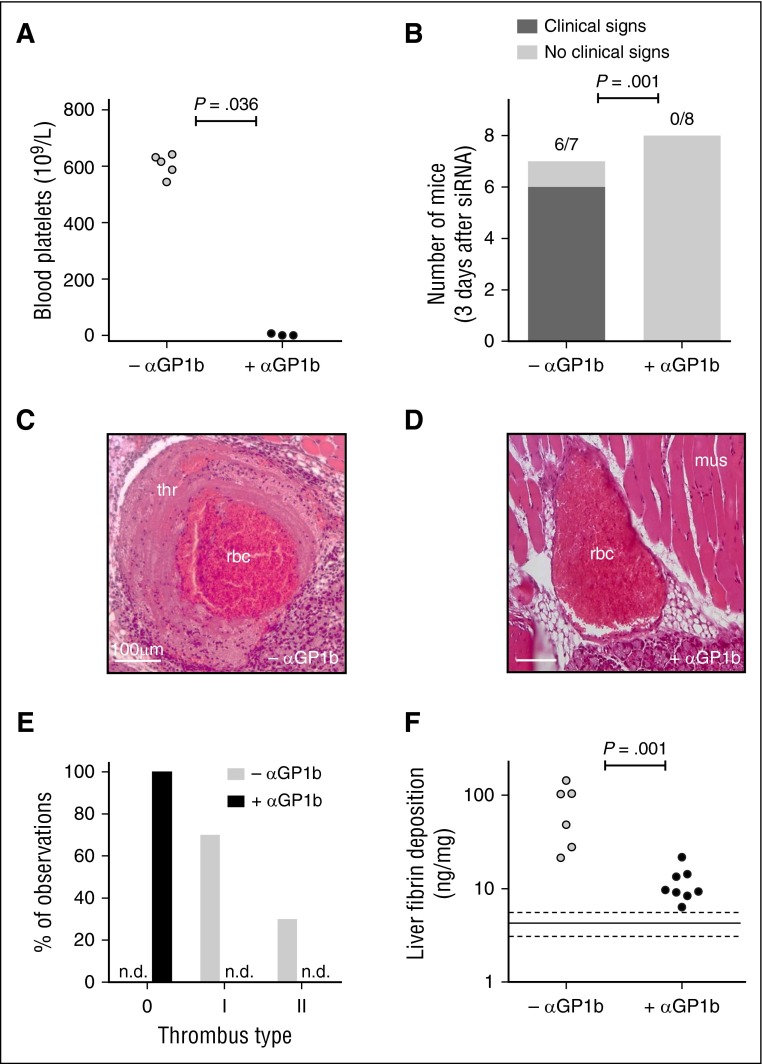Figure 1.
Depletion of platelets prevents thrombotic coagulopathy after siRNA-mediated hepatic knockdown of Serpinc1 and Proc. (A) Blood platelet numbers in mice from a parallel group not receiving siRNA 3 days after injection with saline (open circles) or with a rat monoclonal antibody targeting mouse GP1b (solid circles) (Mann-Whitney rank sum test P = .036). (B) Scoring of the clinical phenotype in mice treated with siRNAs targeting Serpinc1 and Proc. Animals showing characteristic clinical coagulopathy (hatched bar) and animals unaffected (open bars) 3 days after siRNA treatment (end of experiment). One of the mice from the –αGP1b group died as a result of the thrombotic coagulopathy (Fisher’s exact test P = .001). (C) Representative thrombus identified in a vein in the control group (–αGP1b), and (D) a representative vein in the platelet-depleted group (+αGP1b) in hematoxylin and eosin–stained sections. Scale bars represent 100 μm. (E) Scoring for the presence of thrombi: 0, no thrombi found; I and II, thrombi categories based on structure and layering (see “Methods” and supplemental Figure 4). Open bars, –αGP1b (n = 10); solid bar, +αGP1b (n = 16). (F) Levels of fibrin deposition in the liver of the platelet-depleted group (+αGP1b) and the control group (–αGP1b) (Mann-Whitney rank sum test P = .001). Solid and dashed lines indicate fibrin levels found only in siNEG-injected C57BL/6J female mice (median, 4.5 ng/mg; range, 3.1-5.7 ng/mg). mus, striated muscle tissue; n.d., not detected; thr, thrombus with typical fibrin layers; rbc, postmortem clotted blood rich in red blood cells.

